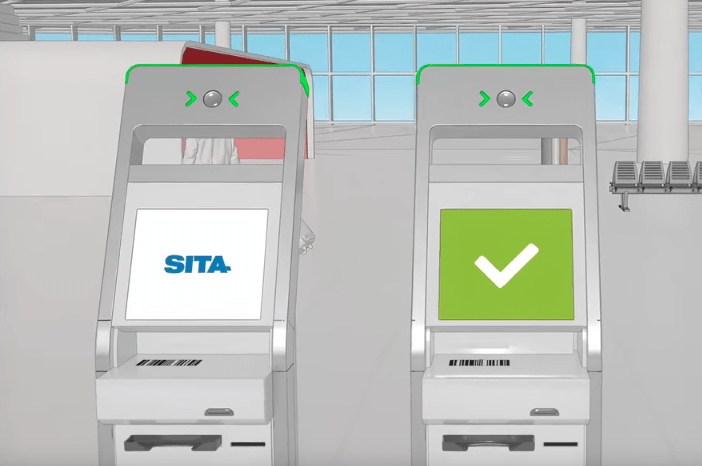SITA Calls for Secure Biometric Data Sharing Between Stakeholders to Optimize PaxEx
Share

APEX Insight: Over the next three years, 77% of airports and 71% of airlines are planning major programs or R&D in biometric ID management to smooth curb-to-gate passenger flow, according to SITA. But in order for implementation of airport biometric solutions to keep pace with the growth of air travel, collaboration between stakeholders is key.
At last week’s SITA Euro Air Transport IT Summit in Budapest, straplined “Aviation 5.0 – Are You Ready?”, the focus was on identity management and passenger flow, with emphasis on the role of biometrics and its potential to deliver a frictionless ‘walkthrough’ passenger experience whereby the cumbersome checkpoints encountered in most airports today will become consigned to the past.
https://www.youtube.com/watch?v=liWBN-fWRPg&feature=youtu.be
“Secure and seamless travel is a must for the air transport industry. It is encouraging to see that both airlines and airports are investing in biometric technology to deliver a secure, paperless way to identify passengers across multiple steps of the journey. We have already seen great success where we have implemented it at airports across the world” said Barbara Dalibard, CEO, SITA, referring to implementations of SITA Smart Path technology.
SITA Smart Path uses biometrics as the single identification token at every step in the passenger journey and integrates into existing airport infrastructure and airline systems such as check-in kiosks, bag drop units, gates for secure access, boarding and automated border control, helping airlines and airports comply with the various regulations from governments and border agencies. Identity verification at self-service check-in kiosks is already in use at 41% of airports and SITA says that self-boarding gates using biometrics with ID documentation, such as a passport, will become ubiquitous over the next three years. Currently only 9% of airports have implemented this, according to SITA’s Air Transport IT Insights 2018 report, though around half expect to do so by 2021.
However, to realize the aspiration of a smooth biometrically enabled passenger journey through the airport – which is necessary to keep pace with the growth of air travel, on track to double by 2036 – stakeholder buy-in across the ecosystem is vital.
From the airport operator’s perspective, Christoph Schneider, Masterplanner at Munich Airport, pointed out that passengers have much higher expectations with regards to the provision of contextualized and personalized services: “No single travel stakeholder (airline, airports, hotels, agencies, corporations, etc.) has the capability to optimize end-to-end-journey experience on their own. All stakeholders want and need the data to provide relevant customer related service offers, but customer related data are fragmented in silos.” A framework is needed to share customer data between any of the parties, “with customers owning the data and consenting what is shared with who, in line with data privacy laws, in a secure controlled way and adhering to privacy concerns,” Schneider said.
“To deliver a seamless passenger experience, we must all collaborate … and use technology to automate, and even eliminate, tedious processes.” – Barbara Dalibard, CEO, SITA
SITA’s Dalibard emphasized that “the variety of legislative demands can be daunting for airlines and airports. To deliver a seamless passenger experience, we must all collaborate – airlines, airports, governments and industry suppliers – and use technology to automate, and even eliminate, tedious processes. We achieve the best results when we work together, this has been most apparent when we incorporate secure biometrics into the passenger journey.”
An example of the proven operational advantages of biometrics at airports was presented at the event by Raoul Cooper, senior design manager, Digital Airport, at British Airways. He discussed BA’s biometric exit trials at Orlando International Airport and at Los Angeles Airport – initiatives involving the respective airports, British Airways and US Customs and Border Protection (CBP). The trials demonstrated that use of the Traveler Verification Service (TVS) system (the solution deployed by CBP, which automates the biometric identity verification and authentication process for flights to and from the USA) significantly accelerated the boarding process. In the British Airways LAX-LHR trial, A380s, with over 450 passengers, consistently boarded in under twenty-five minutes, compared to the average of forty-five minutes with the current manual process.
The efficiency potential of automated identity checks is irrefutable, but with increased reliance on biometrics to deliver a seamless journey, will there still be a role for human interaction in delivering passenger experience in the future? At the event’s press meeting APEX Media posed this question to SITA’s Dalibard ,who responded by saying that, at their trials at Singapore Changi Airport where automation was implemented, thanks to biometrics, it was possible to focus more human resource around those who need it, especially “families with small children, older [travelers] and handicapped people. You can really dedicate your people to take care of these passengers in need and improve passenger satisfaction, for basically airports are a stress zone for passengers when they have issues and what they did at Changi is they re-allocated the people [that had previously been responsible for identity checks] to take care of the people who needed them”.
This article was updated on October 12 at 2:50 p.m. EST


